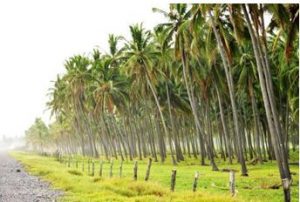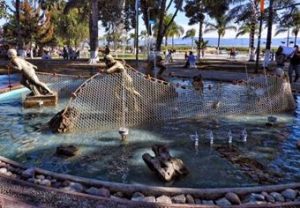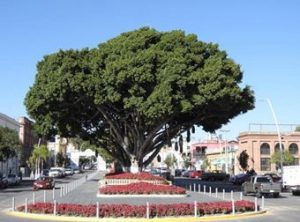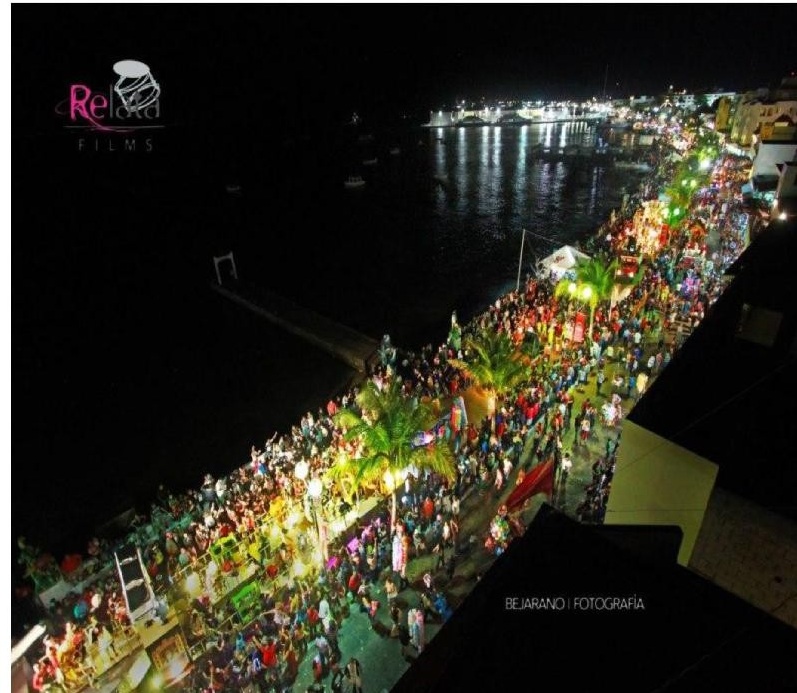By Suzanne A. Marshall from the July 2016 Edition
As our retired life evolves and we respond to the magnetic lure and beauty of Manzanillo, we find ourselves  heading into our first spring and summer season. Now that we’ve made the big decision to stay beyond the glorious winter season, we wonder about the unknown and of course the hot and rainy season. Local friends and expats assure us that we’ll manage just fine. And besides, could it be any worse than the 30°C temperatures we take in our stride as the hearty Canadians we were raised to be? Probably not, but there will be an adjustment, no doubt. Thank goodness we have the prevailing breezes off the shores of Manzanillo Bay. And the Mexicans, of course, have hundreds of years of building experience behind them. They apply that experience with solid brick and concrete structures that are built to hold the heat and rain at bay. It works quite well and, of course, we will layer our comfort with some well managed air conditioning and ceiling fans.
heading into our first spring and summer season. Now that we’ve made the big decision to stay beyond the glorious winter season, we wonder about the unknown and of course the hot and rainy season. Local friends and expats assure us that we’ll manage just fine. And besides, could it be any worse than the 30°C temperatures we take in our stride as the hearty Canadians we were raised to be? Probably not, but there will be an adjustment, no doubt. Thank goodness we have the prevailing breezes off the shores of Manzanillo Bay. And the Mexicans, of course, have hundreds of years of building experience behind them. They apply that experience with solid brick and concrete structures that are built to hold the heat and rain at bay. It works quite well and, of course, we will layer our comfort with some well managed air conditioning and ceiling fans.
 Manzanillo sits in the western coastal state of Colima and supports the busiest port in Mexico. Unlike the endless desserts and cacti that are usually depicted in movies, Mexico is really more about tropical terrain that is mountainous and lush. Colima sits where the Sierra Madre joins the Southern Sierra Madre on the same latitude as Hawaii. Because the winter months are moderately hot with balmy evenings and no rain for 6 months, it is a wonderful place to be when escaping northern winters.
Manzanillo sits in the western coastal state of Colima and supports the busiest port in Mexico. Unlike the endless desserts and cacti that are usually depicted in movies, Mexico is really more about tropical terrain that is mountainous and lush. Colima sits where the Sierra Madre joins the Southern Sierra Madre on the same latitude as Hawaii. Because the winter months are moderately hot with balmy evenings and no rain for 6 months, it is a wonderful place to be when escaping northern winters.
Of course, it makes perfect sense that the rains must come to replenish the luscious green mountains and the valleys filled with coconut and pineapple groves; expansive vegetable farms growing peppers, limes, tomatoes, mangos and many other vegetable and fruit varieties. It is a sight to behold when one can glimpse the vast fields of sugar cane that are maturing, with their stalks of pampas reaching for the sky and catching the light of the setting sun in their frothy plumage. Replenishing rain feeds the miracle of these bountiful growing cycles.
catching the light of the setting sun in their frothy plumage. Replenishing rain feeds the miracle of these bountiful growing cycles.
I am assured by the locals that the rains tend to fall every three or four days as the atmosphere unleashes the buildup of humidity in the air. So there are still lots of blue skies and sunshine hours. In my mind, I was expecting to see daily curtains of rain and constant sheltering from the deluges. But my friends say no, just go on about your daily life and errands and always carry an umbrella for the showers that can start suddenly. I have also been told that one must see for themselves the awesomeness of a Manzanillo thunder storm. I actually look forward to this.
 As a child, my father taught me and my brothers about weather systems and how magnificent they could be. So we would all watch the prairie thunder storms with great excitement and interest instead of fear. It was quite delightful to watch the gathering cloud formations of gigantic cumulonimbus and stratocumulus clouds filled with moisture; the loud crackling and booming of thunder and the shooting bolts of lightening hitting the ground; Mother Nature at her stunning best!
As a child, my father taught me and my brothers about weather systems and how magnificent they could be. So we would all watch the prairie thunder storms with great excitement and interest instead of fear. It was quite delightful to watch the gathering cloud formations of gigantic cumulonimbus and stratocumulus clouds filled with moisture; the loud crackling and booming of thunder and the shooting bolts of lightening hitting the ground; Mother Nature at her stunning best!
From my research I have learned that the rainiest and hottest months are August and September. Ever the one for backup plans, I begin to explore the idea of short getaways and, at the same time, exploring other areas of Mexico near and far. It’s time to learn some geography and history which this beautiful country will amply supply. There’s a lot to learn from written sources but nothing substitutes for the experience of ‘being there’.
So, a few months ago, we decided to check out some areas around Guadalajara since we had to attend our annual condo meeting there anyway. This area is at a very high altitude making it a much drier climate than at the seaside. As a matter of fact, Guadalajara stands at an altitude of 5,138 ft. (1566 meters), almost a mile high city. Near there, lies Lake Chapala the main source of water for the city of 4.3 million people.
We decided to stay in that area in a place called Ajijic which also borders the town of Lake Chapala. This  afforded us the opportunity to investigate small hotels and potential short-term rentals in the summer months. It is a very popular area for Americans and Canadians who come to winter. There are estimated to be between 6,000 to 10,000 foreign residents in the area. “The main pull factors for these residential tourists are: an amenable climate, reasonable property prices, access to stores, restaurants and high quality medical service, an attractive natural environment, a diversity of social activities, proximity to airports, tax advantages and relatively inexpensive living costs.”
afforded us the opportunity to investigate small hotels and potential short-term rentals in the summer months. It is a very popular area for Americans and Canadians who come to winter. There are estimated to be between 6,000 to 10,000 foreign residents in the area. “The main pull factors for these residential tourists are: an amenable climate, reasonable property prices, access to stores, restaurants and high quality medical service, an attractive natural environment, a diversity of social activities, proximity to airports, tax advantages and relatively inexpensive living costs.”
Our first experience in this area was very positive. Not only is it beautiful and affordable, but there is a very active social community for expats. With all the amenities one could really expect, this seemed like a good option for a little breakaway vacation. As we roamed the streets and walked the lakefront boardwalk filled with restaurants, shops and entertainment, we spotted a grand looking lakeside bed and breakfast. It appeared to be an old three story mansion with elegant windows and wrought iron gates. Out of curiosity we  rang the bell. In a few minutes a tiny and lovely elderly lady answered the door. She spoke excellent English as we inquired about rates and bookings. Before we knew it, she was showing us through the most elegant sitting rooms and dining areas. The four bedrooms were like suites and we decided that on our return a few days later, following our meetings, we’d stay a night and get the ‘feel’ of the area.
rang the bell. In a few minutes a tiny and lovely elderly lady answered the door. She spoke excellent English as we inquired about rates and bookings. Before we knew it, she was showing us through the most elegant sitting rooms and dining areas. The four bedrooms were like suites and we decided that on our return a few days later, following our meetings, we’d stay a night and get the ‘feel’ of the area.
As we were departing, our hostess asks us if we are going to hear the symphony that evening? “Symphony?” we responded a bit stunned. “Where?” She goes on to say that some event is taking place that evening in the old city hall. So we made a mental note of this but thought it highly unlikely that we could attend, not having a clue about where this might be or if we would be presentable.
Off we went to seek out a nearby cafe to grab a bite and then return to our little hotel for the night. As fortune would have it, we chose a small boulevard cafe and were happily munching when we noticed some activity right across the street. There, numerous young people were gathering and entering a large building. They were dressed in dark dressy jackets and pants and carrying various instrument cases with violins, cellos, violas and so on. Could this be the symphony?
I am delighted to say that once we crossed the street and entered the building we found ourselves welcomed to attend a concert being performed within the hour by the string symphony orchestra of the University of Guadalajara. We stayed and listened to the twenty piece orchestra in a lofty hall playing some of the most beautiful and famous classical symphonies for strings (including some modern Spanish compositions).
We had never imagined we would find ourselves listening to such a marvelous orchestra in a yet-unexplored town in Mexico and one that we will be delighted to return to in future.
As an aside, we saw our engaging bed and breakfast hostess arrive for the concert. We stayed the night at her B&B upon our return a few days later and thoroughly enjoyed our stay. We had definitely found an enriching adventure in Mexico and now look forward to our future returns to this nearby location when we want a change of scenery. It’s a way of always ensuring perspective and never taking anything for granted.
Download the full edition or view it online
—
Suzanne A. Marshall hails from western Canada and has been living the good life in Manzanillo over the past 8 years. She is a wife, mom and grandma. She is retired from executive business management where her writing skills focused on bureaucratic policy, marketing and business newsletters. Now she shares the fun and joy of writing about everyday life experiences in beautiful Manzanillo, Mexico, the country, its people, the places and the events.




